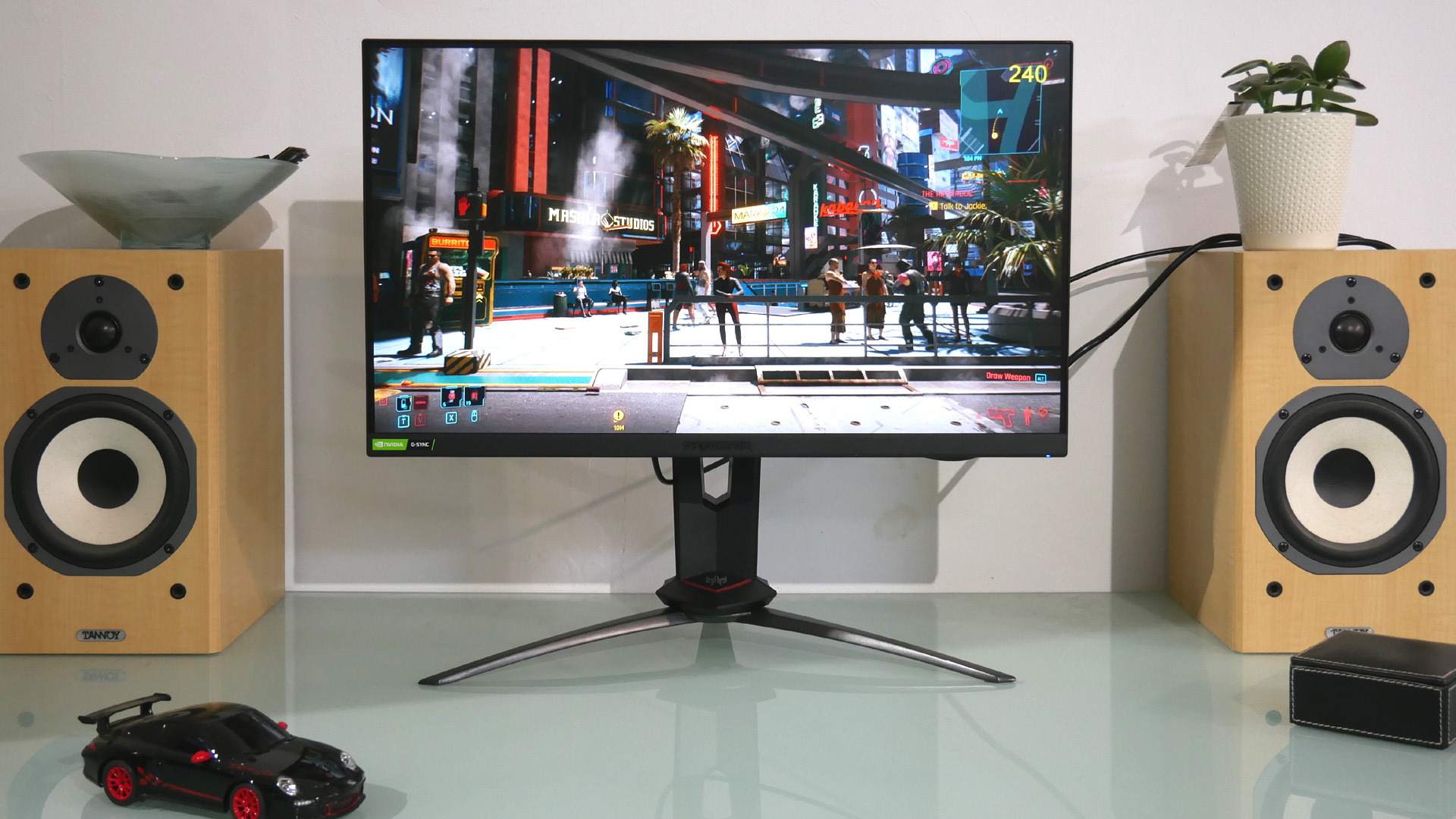GamesRadar+ Verdict
Acer’s latest 25-inch gaming panel packs a 240Hz and 0.5ms punch, and offers the full package for a super-speedy 25-inch IPS screen.
Pros
- +
Speedy 240Hz panel
- +
Good response for an IPS panel
- +
Decent brightness and colours
Cons
- -
Low resolution compromises visual detail
- -
Small panel size
Why you can trust GamesRadar+
Gaming monitors are a strange breed. Take the Acer Predator XB253QGX. By the basic numbers, it’s pretty pedestrian. The 1080p resolution from a 25-inch panel is not exactly aspirational stuff. Not in the here and now when 40-inch contenders for best 4K monitors for gaming can be had for about the same money (around $380 Stateside and £330 in the UK).
Then you eyeball the box and spot some startling stats, including a 240Hz refresh rate and an ultra-low 0.5ms pixel response. As ever, that pixel response number needs to be viewed with healthy scepticism. Real-world response performance can diverge dramatically from claimed specifications - but it's still promising stuff. And when combined with IPS panel tech and HDR support, there is no doubting the Predator’s gaming credentials. This promises to be a very punchy panel.
Design & Features
Gaming peripherals with subtle design cues are few and far between. The Acer Predator XB253QGX does nothing to challenge that tradition. But it isn’t as adolescent as some in the best gaming monitor sphere.
Yes, the usual sharp-edged styling with cartoonish detailing, complete with red accents, is on display. The build quality is a little plasticky, too. But the mostly black design with slim bezels on three sides of the panel does at least look contemporary.
What’s more, the stand offers the full array of tilt, swivel, height, and rotate into portrait adjustments. Plus, the power supply is integrated into the chassis, so there’s no unsightly external brick to deal with.
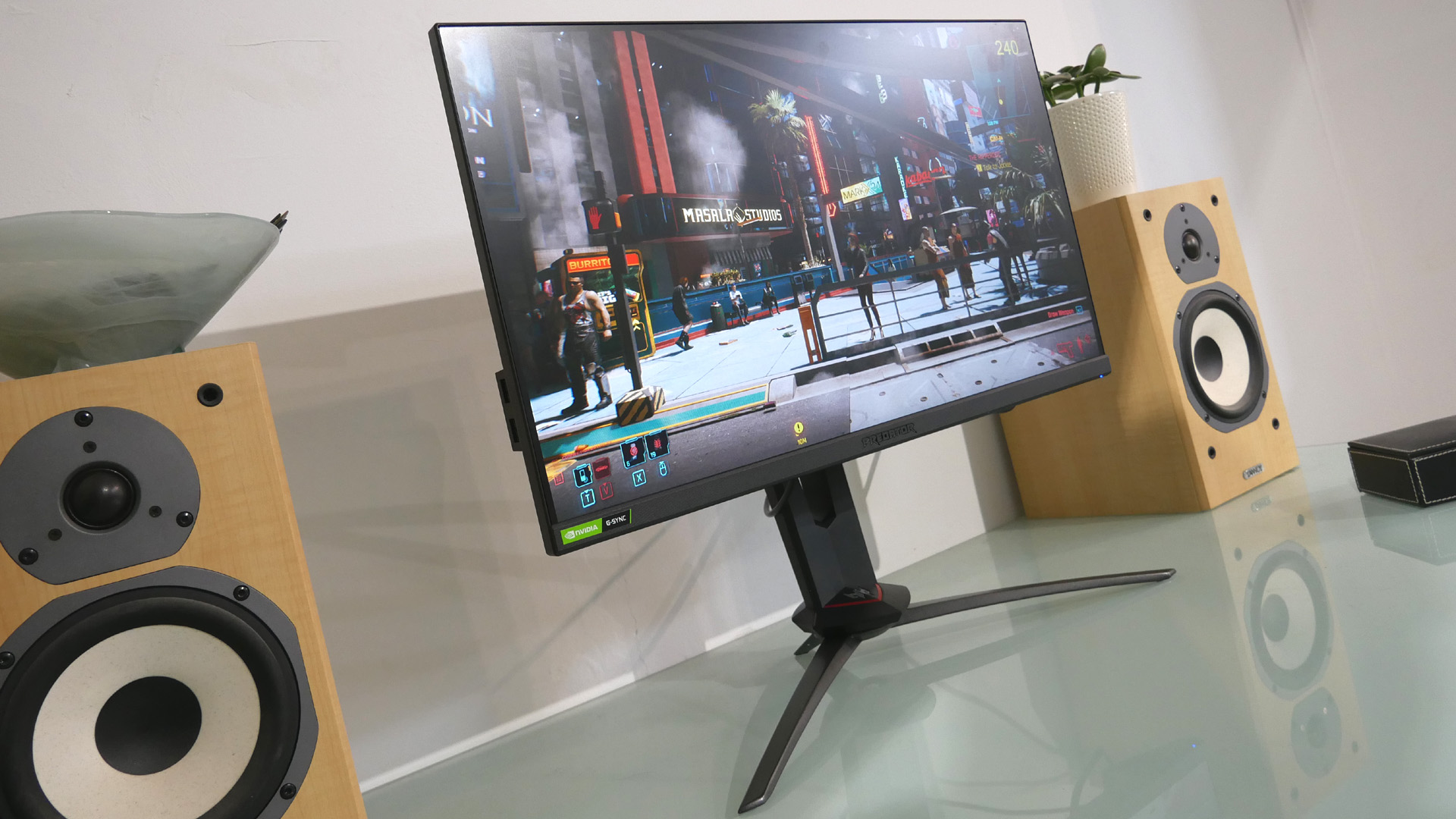
The Acer Predator XB253QGX’s core feature set is built around that modestly-proportioned 25-inch panel. It’s only 1080p or 1,920 by 1,080 pixels in terms of native resolution. But then if what you want is maximum frame rate, higher resolutions just slow you down.
Instead, it’s the 240Hz refresh, Nvidia G-Sync compatibility, and 0.5ms response times that mark this out as a gaming-optimised weapon. The 0.5ms response claim (for the record, that’s the MPRT time, GtG response is quoted at 1ms) in particular makes this theoretically the fastest IPS panel we’ve seen, and potentially one of the best FreeSync compatible G-Sync monitors around.
The headline stuff aside, there’s also Vesa DisplayHDR 400 certification. That’s very much entry-level HDR support, which means no local dimming and a peak brightness of 400cd/m2. Strictly speaking, that is not the stuff of a true HDR experience. But it does ensure this screen has a powerful backlight in SDR terms and also that it will render HDR colour spaces correctly.
Inputs-wise, there’s a single DisplayPort socket and two HDMI ports. For the record, the latter do support the full 240Hz refresh. A four-port USB hub is also included, but there’s no USB-C connectivity.
One final feature of note is the configurable refresh-rate counter available in the OSD menu. It’s a very useful little tool for helping to ensure that you’re running at the right refresh rate in-game and also to make it easier to confirm that adaptive sync is enabled.
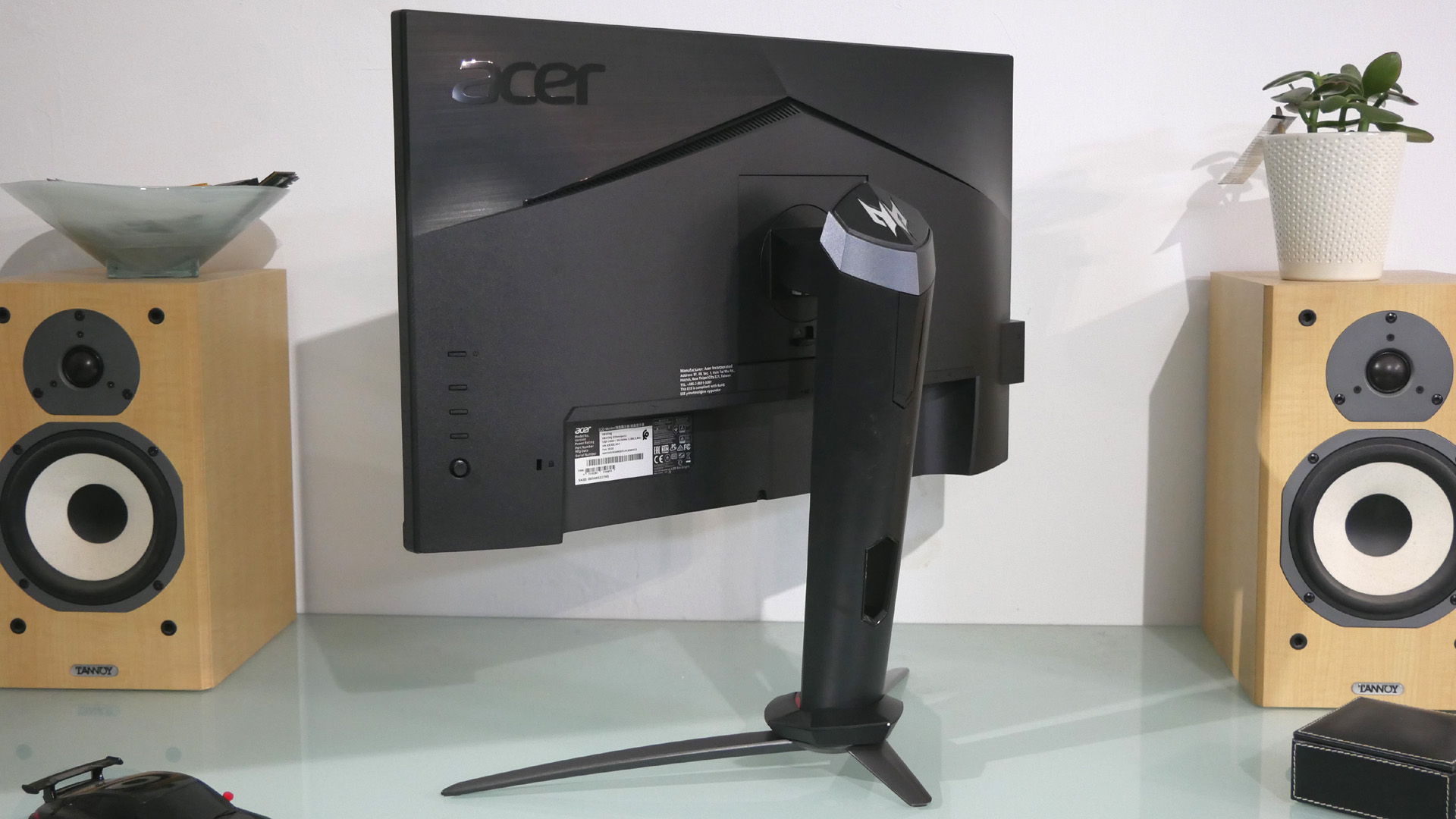
Performance
The Acer Predator XB253QGX is proof positive that spec sheets don’t tell you everything - both for better and for worse. By way of example, this monitor looks very similar on paper to the Lenovo Legion Y25-25. Both are 25-inch IPS gaming monitors with 240Hz refresh support.
However, this Acer monitor is comfortably punchier, more vibrant, and more saturated, and has cleaner, brighter whites. It’s just a better quality panel. What it’s not, subjectively at least, is any faster. That 0.5ms response claim doesn’t translate into noticeably faster pixels than the Lenovo.
That said, this remains as quick an IPS monitor as we have seen. Only the very fastest TN panels offer less blur if the context is LCD as opposed to OLED screens. In terms of latency, it’s also every bit as speedy as you’d hope for given the 240Hz refresh.
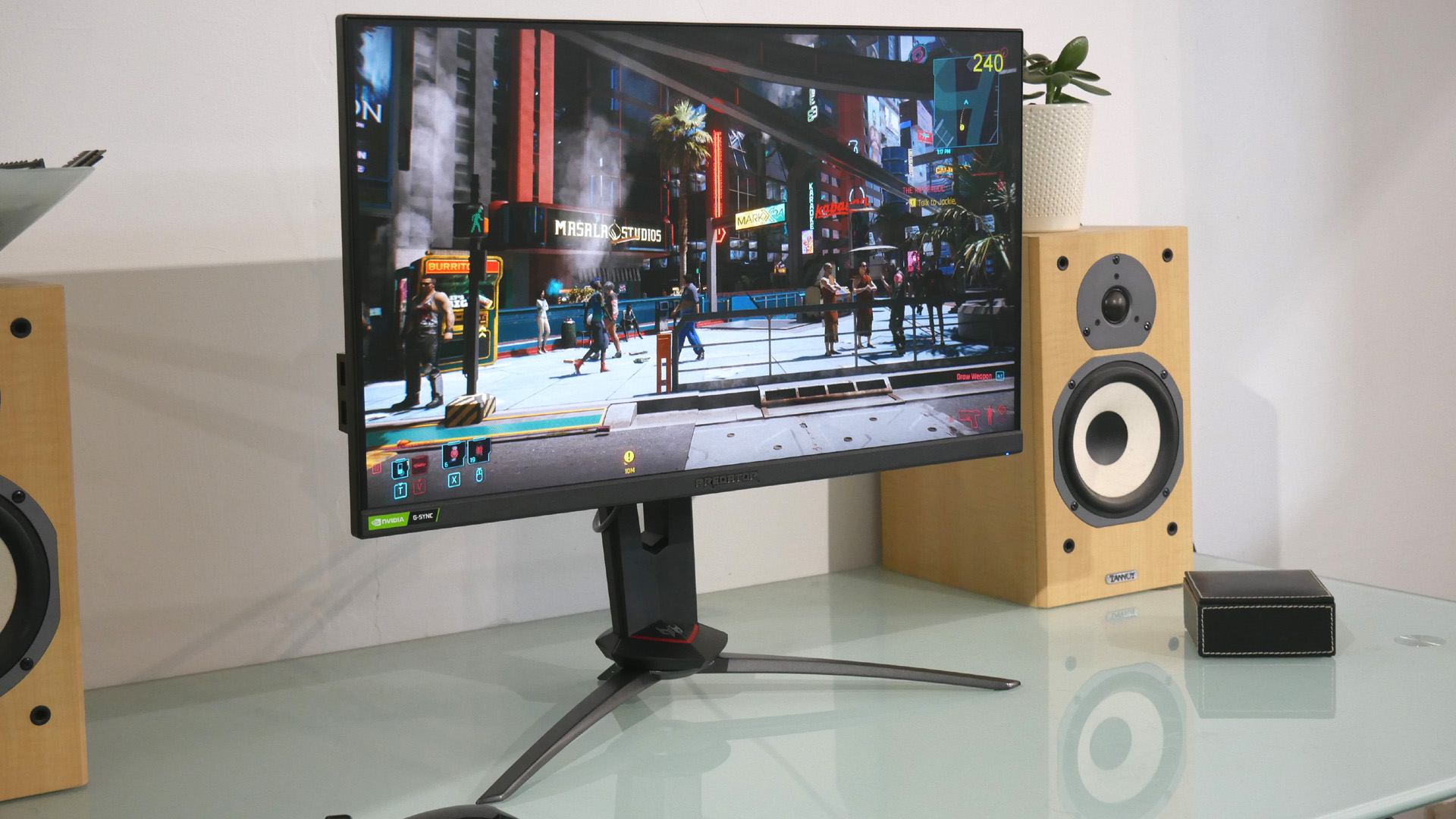
And all that really does make a difference in shooters like Counter-Strike: Source which is all about frame rates rather than high-end visuals. In fact, thanks to the modest resolution, even more modern and graphically demanding shooters like Call of Duty: Warzone absolutely fly. Put it this way: you’d have to be pretty much pro-level at esports to conclude you needed a faster monitor than this. This thing is seriously quick. (Though it's worth remembering, you'll need one of the best graphics cards and/or best gaming PCs to get the absolute max speeds out of this monitor.)
Where it’s not so strong is pure visual spectacle. If you’ve ever seen Cyberpunk 2077 running maxed out at 4K, the Acer’s 1080p rendition simply can’t compete for precision and detail. It looks soft-edged and blurry by comparison. But it does at least do Cyberpunk’s vivid palette justice thanks to accurate IPS-powered colours and good brightness levels.
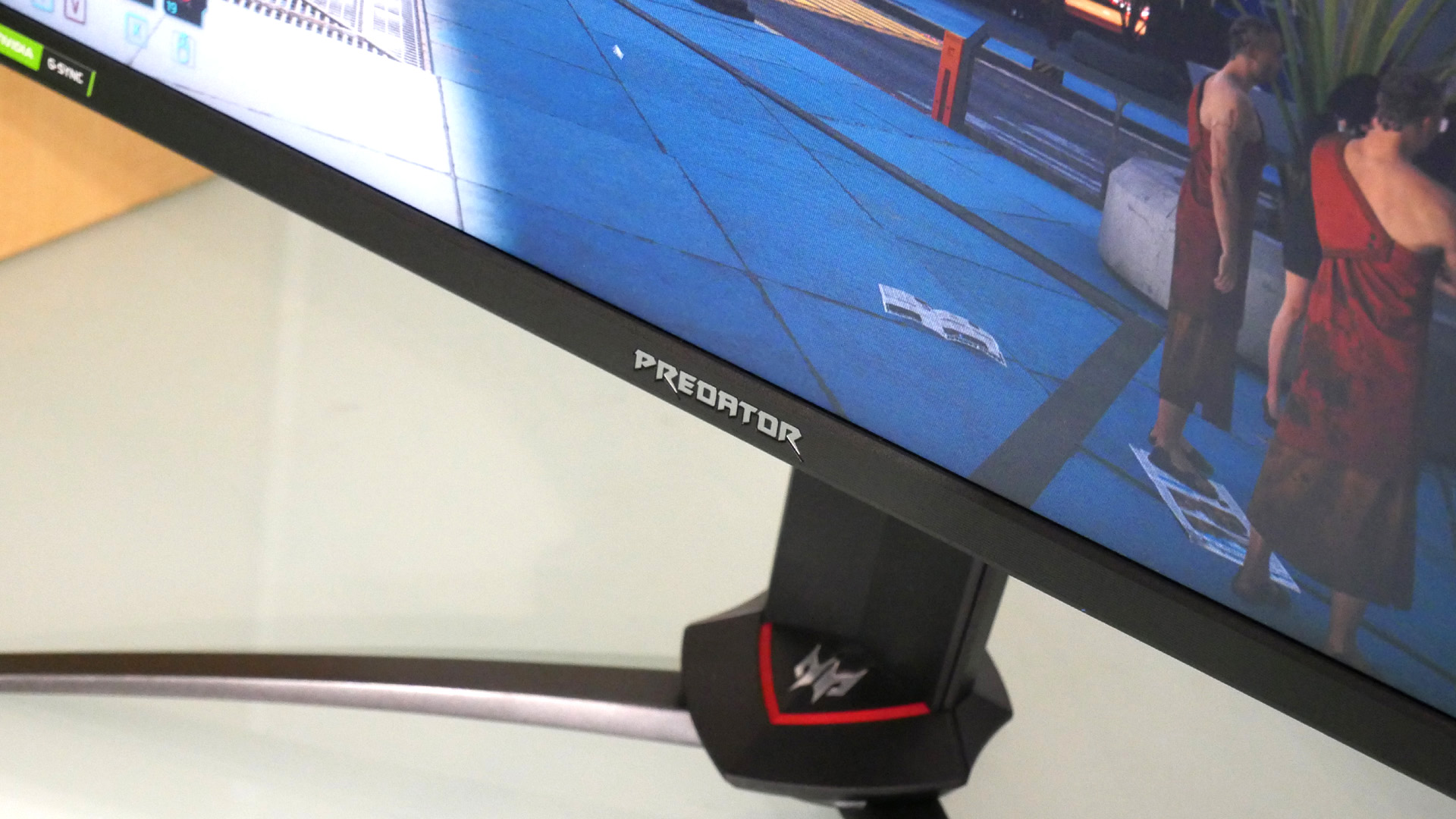
Overall - should you buy it?
At this kind of money, you’re getting into 1440p 144Hz territory. For general-purpose gaming rather than purely for esports, that’s probably a better compromise between speed and image quality.
However, if you want maximum frame rates, ultra-low response times, and minimal latency, then you need something super fast. This is where 1080p panels like this can make more sense. The Acer Predator XB253QGX gives you all that along with decent IPS image quality. If it’s a super speedy 25-inch IPS gaming panel, with low latency and some of the fastest pixels going, that you crave, then this is a very appealing option at a reasonably affordable price.
A serious dissertation on the finer points of input lag and overshoot followed by a forensic examination of AI-accelerated temporal upscaling. Such is a routine day in the working life of long-time tech wordsmith, Jeremy Laird. Along with GamesRadar, Jeremy’s 15-year back catalogue includes a host of tech and gaming outlets, including TechRadar and PC Gamer, not to mention contributions to mainstream media from the Independent to the Evening Standard. Complimenting Jeremy’s debilitating addiction to all kinds of digital hardware, he is also afflicted by an obsession with and a significant occupational sideline in cars and automotive technology.
